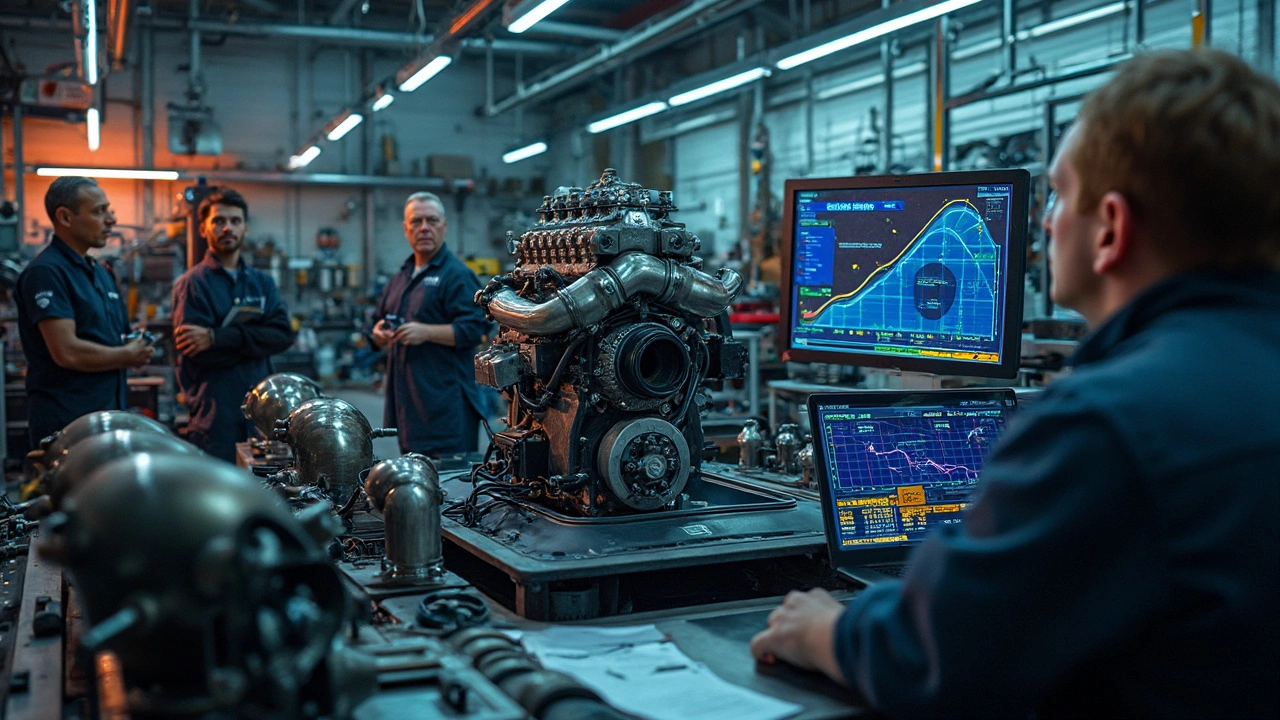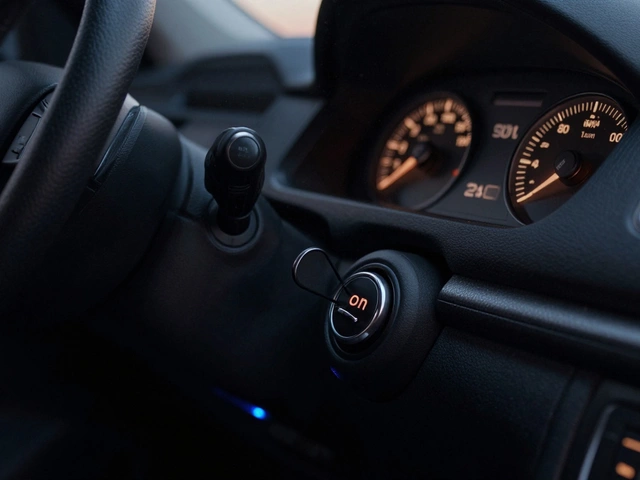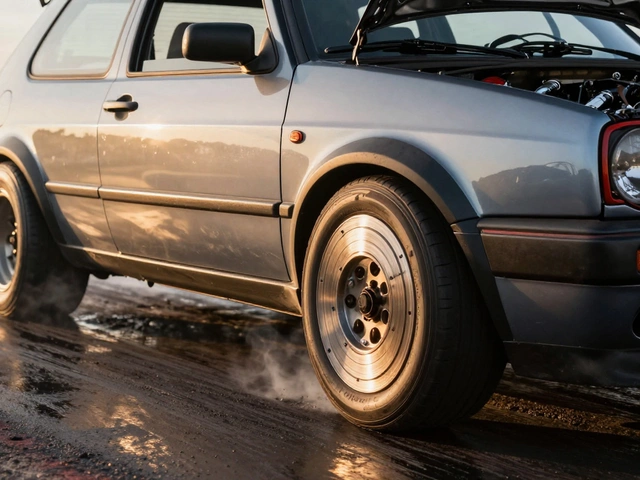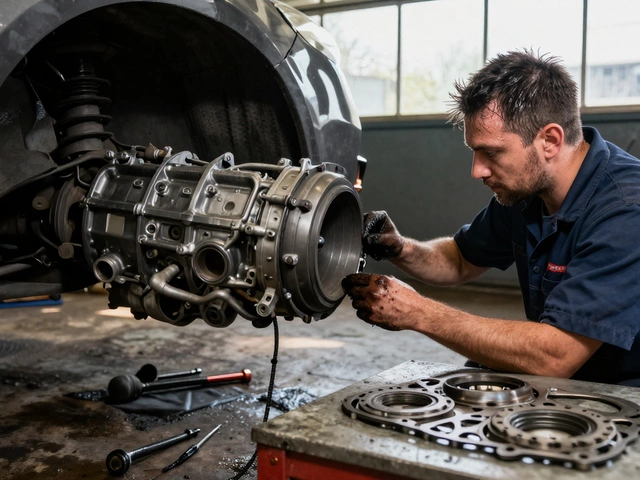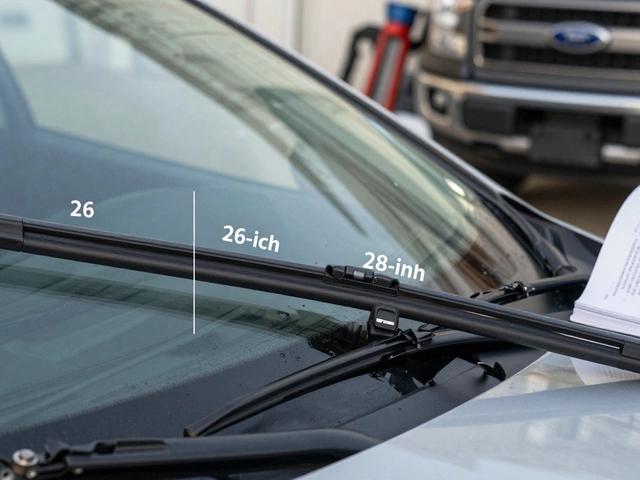So you've hit the 400 horsepower mark with your ride, congrats! But now you're scratching your head about the next step: choosing the right exhaust size. It might seem like a small detail, but trust me, it's crucial for getting the most out of that beefy engine.
Imagine your exhaust system as your car's respiratory system. Just like you wouldn't go for a jog with a straw in your mouth, your car doesn't want to push all those exhaust fumes through a too-small pipe. On the flip side, go too big, and you might lose that sweet balance between power and efficiency.
When it comes to a 400 HP engine, there's a golden range for exhaust size. Typically, you’re looking at something in the 2.5 to 3-inch diameter range. But it's not one-size-fits-all; the exact size can differ depending on your setup and goals. Stick around, and we’ll dig into what really affects that ideal exhaust size!
- Understanding Horsepower and Exhaust
- Why Exhaust Size Matters
- Getting the Right Diameter
- Materials and Their Impact
- Performance vs. Sound
- Practical Installation Tips
Understanding Horsepower and Exhaust
Alright, let's tackle how horsepower and the exhaust system are linked. Think of horsepower as raw power—it’s the engine’s ability to get work done. More horsepower means more potential for speed and acceleration. Simple, right?
But here’s the catch: without a properly sized exhaust, that power can go to waste. The exhaust system’s main job is to expel burnt gases out of the engine’s cylinders so that fresh air and fuel can get in. It’s all about making your engine breathe easy.
Why Size Matters
When the exhaust pipes are too small, they choke the flow of gases, creating back pressure. This back pressure can reduce the power output of your engine since it has to work harder to push the exhaust out. On the other hand, if the pipes are too big, the exhaust loses its velocity, which can slow things down.
The Balance
For a 400 HP engine, you’re aiming for the sweet spot where your exhaust size allows for enough gas flow without sacrificing too much speed in the removal process. Most folks find that a 2.5 to 3-inch diameter is just right for maximizing performance and keeping things running smoothly.
Here’s an interesting bit: Some enthusiasts say for every 100 horsepower your engine produces, you need about 1 inch of exhaust diameter. That means for your mean machine with 400 horsepower, you should ideally fall within the 4-inch mark. However, that’s not a steadfast rule since things like bends and mufflers also affect the equation.
Factors Affecting the Ideal Size
Apart from the basic diameter, consider the length of the exhaust system and the number of cylinders when deciding on size. Your goal is to find a balanced and harmonious setup, where exhaust gases can flow freely without back pressure stealing your horsepower.
Why Exhaust Size Matters
Getting the right exhaust size is more than just a number game – it’s like giving your car a proper workout routine. A well-sized exhaust system helps in maximizing the flow of exhaust gases from your engine, directly boosting performance.
If you've hit that sweet spot of 400 HP, your car's engine is already doing serious work crafting power. Now, an inadequate exhaust can bottleneck the whole process. Imagine trying to run a marathon with tiny lungs – you wouldn't get far. The same thing happens when an undersized exhaust chokes your engine's breathing.
Back Pressure Reduction
This isn't about a battle against your kitchen sink. Back pressure refers to the buildup of exhaust gases that can't exit quickly enough through the pipes. A properly sized exhaust reduces this unwanted pressure, helping in faster and more efficient engine breathing. At 400 HP, aim for an exhaust diameter that ticks the right boxes for flow and efficiency. The drag of back pressure not only affects performance but also impacts fuel economy.
Temperature Control
Adequate exhaust sizing plays a role in managing the temperature within the system. Smaller pipes tend to hold more heat, which might lead to unwanted damage over time. Higher performance engines like yours can suffer if the exhaust system can't handle the heat adequately. Too much heat can mean trouble for engine components and exhaust materials.
At the end of the day, choosing an exhaust size isn't about the biggest pipe on the block. It's about balance. With the right size, your car’s engine breathes easily, gets rid of gases efficiently, and maintains optimal temperatures. Finding that sweet spot will let you enjoy more power, better fuel efficiency, and long-term durability.
Getting the Right Diameter
Choosing the perfect diameter for your exhaust isn’t just about numbers—it's about knowing what your car needs to breathe easily while still packing a punch in the performance department. Let's break down some important points when selecting the right diameter for your exhaust size that will accommodate your 400 HP beast.
Understanding the Basics
In a nutshell, the diameter of your exhaust piping determines how quickly and efficiently exhaust gases escape from the engine. For a 400 HP engine, the sweet spot typically falls between a 2.5 to 3-inch diameter. A general saying in the car world is: the higher the horsepower, the bigger the pipe needs to be for optimal flow. But remember, it’s not about just throwing on the biggest pipes you can find.
Balancing Flow and Back Pressure
Too small a diameter could choke your engine, while too large could cause a lack of back pressure, leading to a decrease in low-end torque. For most cars hitting around 400 HP, a 3-inch diameter pipe is like the Goldilocks of options—not too big, not too small. It provides just enough space for gases to flow without compromising your car's power band.
Considering Other Factors
- Are you driving primarily on highways or in the city? Traffic-heavy areas might benefit from slightly smaller diameters to retain torque at lower RPMs.
- Do you prioritize power over exhaust note? Larger pipes can change the sound, leaning towards a bassier growl, so consider what kind of tone you're after.
- Are there other modifications, like a turbocharger, that demand specific exhaust requirements? Checking compatibility with other mods can save you from headaches down the road.
Making the Choice
Measure twice, cut once, folks! Make sure to consult with a trusted mechanic or a performance shop for a professional take if you're unsure. Being on the fence? You might want to start with a 2.75-inch setup and adjust based on driving feel.
Lastly, don't skimp on quality. It might make sense to go for stainless steel for longevity, especially if you're in an area with harsh weather conditions. Once you've nailed down the diameter, you'll be well on your way to maximizing the performance potential of that 400 HP power plant.

Materials and Their Impact
Choosing the right material for your exhaust system is just as crucial as picking the correct diameter, especially if you're packing 400 horsepower. Different materials can affect durability, performance, and even the sound of your ride.
Stainless Steel: The Durable Choice
Stainless steel is a popular go-to for performance enthusiasts. Why? Because it lasts. Unlike other metals, it’s resistant to rust, which means you get a long-lasting exhaust with minimal maintenance. It's great for those living in areas with harsh weather conditions. Plus, it can handle heat like a champ, which is important when your engine's pushing some serious power.
Aluminized Steel: The Budget-Friendly Option
If your wallet’s feeling a bit light, aluminized steel might be your best bet. It’s usually more affordable than stainless steel and offers decent rust resistance thanks to its aluminum-silicon alloy coating. However, keep in mind that it doesn't last as long, and you might find yourself needing a replacement sooner, especially if you’re dealing with a lot of moisture on the roads.
Titanium: The Performance Powerhouse
Looking to shed every possible pound from your car? Titanium is the way to go. This material is super lightweight and, at the same time, incredibly strong. The only catch is that it's usually more expensive. If you're serious about track performance or just love the idea of a unique, high-end setup, titanium's your material.
Impact on Sound
Believe it or not, your exhaust material can also tweak the sound of your engine. Stainless steel usually gives a deep, crisp sound, while aluminized steel can produce a softer tone. Titanium delivers a raspier sound, giving a more aggressive vibe when you hit the pedal. It's something to consider if the way your car sounds as important to you as the way it performs.
Here’s a quick comparison of the three:
| Material | Durability | Cost | Weight |
|---|---|---|---|
| Stainless Steel | High | Moderate | Moderate |
| Aluminized Steel | Moderate | Low | High |
| Titanium | High | High | Low |
So, when choosing materials for your exhaust system, think about your priorities. Are you after durability, cost-effectiveness, high-end performance—or maybe a bit of each? Weighing these factors will help you make a choice that suits your needs and keeps your 400 HP beast running strong and sounding sweet.
Performance vs. Sound
When you're building a car with 400 horsepower, you're not just looking for raw power, you're also looking for the right exhaust size to balance performance and sound. It's a common dilemma: too much performance focus and you might end up with a car that's deafening on the road; focus too much on sound, and you could lose horsepower that you've worked hard to achieve.
The exhaust system plays a crucial role in determining how your car sounds and performs. Larger diameters generally help with power because they reduce backpressure, which allows exhaust gases to escape more freely. But, if your exhaust is too big, you might not get the back-pressure that's actually beneficial in certain RPM ranges, especially for torque.
Sound Engineering
The sound your car makes as it accelerates can be a head-turner or a headache. Larger pipes tend to have a deeper, throatier tone. Meanwhile, smaller ones give off a higher pitch. Mufflers also contribute a lot here, and choosing a design that's right for your setup can alter the tone and loudness to your liking.
Materials like stainless steel can affect the sound, often creating a clear and crisp tone compared to mild steel.
Balancing Act
For most street applications, a 2.5 to 3-inch exhaust diameter provides a solid compromise, offering a satisfying rumble without sacrificing performance. Use car performance calculators or even consult with a specialist to tailor an exhaust that aligns with your goals.
Consider the sound level restrictions in your area if you're planning on daily driving. A killer growl might be music to your ears, but not necessarily to your neighbors. In some cases, a resonator can help reduce drone without sacrificing too much of the growl.
Getting the right blend of performance and sound is more art than science. Figure out what's more important to you—sheer performance or stunning sound—and tune your exhaust system accordingly.
Practical Installation Tips
Jumping into exhaust installation might feel overwhelming, but with a few handy tips, you can nail it. First things first, getting your car up on reliable jack stands is your launch pad. Safety comes first, right?
Gathering Tools and Materials
Before you dive in, assemble your toolkit. You’ll need basic wrenches, a saw for cutting pipes if needed, and some lubricant to help stubborn bolts slide a little easier.
- Set of wrenches
- Lubricant (like WD-40)
- Pipe cutter or saw
- Torque wrench
Step-by-Step Installation
- Old Exhaust Removal: Start by unbolting the old exhaust system. Be patient, rusty bolts are notorious for being tough.
- Pre-Fit the New Pipes: Before securing anything, make sure they're aligned correctly and at the right height to avoid later headaches.
- Tightening: Use a torque wrench to tighten the bolts. This ensures everything is snug without overdoing it and risking damage.
- Check for Leaks: After everything's bolted up, fire up the engine to check for any leaks. A quick visual and auditory inspection will do the trick.
Troubleshooting Tips
Got a rattle? It’s likely a loose connection or a pipe touching somewhere it shouldn’t. Go over your connections and adjust the position of the pipes if needed.
And don’t forget to periodically check the system, as pipes can shift over time. Keeping everything in place maintains optimal performance and sound.
